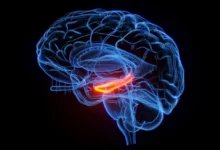Scientists Discover New Hormone in Breastfeeding Women That Accelerates Bone Healing
Researchers solve the mystery of how women's bones remain unaffected even though they lose calcium to produce milk

Researchers from the University of California at San Francisco (UCSF) and UC Davis have identified a groundbreaking hormone, CCN3, that accelerates bone healing and maintains bone strength in breastfeeding women. This discovery could revolutionize the treatment of osteoporosis and bone fractures.
The study aimed to unravel the mystery of how women’s bones remain unaffected despite the significant loss of calcium during milk production. Traditionally, estrogen was considered crucial for bone health, but the research revealed that another factor is at play.
Senior author Dr. Holly Ingraham and her team, while studying female mice, blocked an estrogen receptor in neurons in a small brain area, resulting in increased bone mass. They suspected a blood-borne hormone but couldn’t identify it initially. An exhaustive search led to the discovery of CCN3, a hormone behaving uniquely among those secreted by neurons.
“The notion that a hormone can be secreted directly from the brain is a new concept in endocrinology,” said Ingraham. This hormone was found in lactating female mice but not the receptor, suggesting it plays a vital role in bone health during lactation.
Without CCN3, lactating female mice lost bone mass, and their offspring lost weight, highlighting the hormone’s importance. When CCN3 levels were increased in mice, both male and female, their bone mass and strength significantly improved within weeks. Remarkably, CCN3 doubled bone mass in very old female mice and those lacking estrogen.
To test its healing properties, researchers created a hydrogel patch that released CCN3 over two weeks and attached it to bone fractures in older mice. The results were astonishing: the fractures healed at the rate of young mice, a feat previously unattainable with other strategies.
Dr. Thomas Ambrosi, a project collaborator, noted, “We’ve never been able to achieve this kind of mineralization and healing outcome with any other strategy.” The hormone not only promoted healing but also supported the production of new bone cells by stem cells in the bones.
With over 200 million people affected by osteoporosis worldwide, the potential applications of CCN3 are vast. Women post-menopause, breast cancer survivors on hormone blockers, elite female athletes, and older men at higher risk of fractures could benefit from treatments based on this hormone.
“This discovery could increase bone mass in various scenarios, providing a significant breakthrough in osteoporosis and fracture treatment,” said Ingraham. Researchers plan to continue studying the molecular mechanisms of CCN3 in breastfeeding women and its broader applications in bone health.
This research opens new avenues for treating bone conditions and highlights the critical role of previously overlooked physiological mechanisms.
References:
- Babey, M.E., Krause, W.C., Chen, K. et al. “A maternal brain hormone that builds bone.” Nature, 10 July 2024. Available from: https://doi.org/10.1038/s41586-024-07634-3.
. - The National Institute on Aging has more about osteoporosis. University of California, San Francisco, news release, 10 July 2024. Available from: https://www.ucsf.edu/news/2024/07/429481/maternal-brain-hormone-bone-research.








